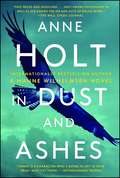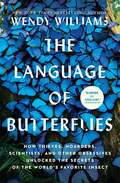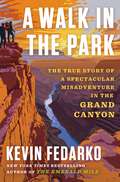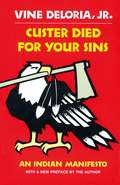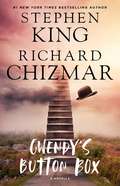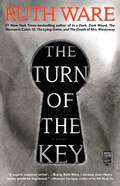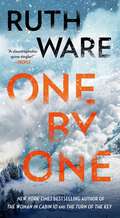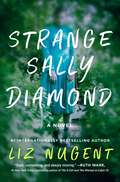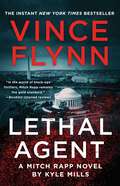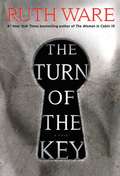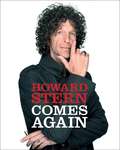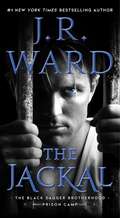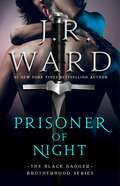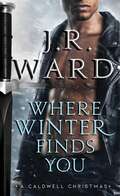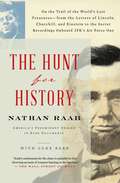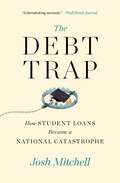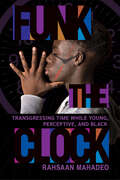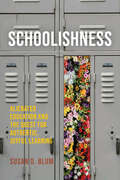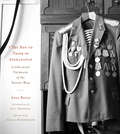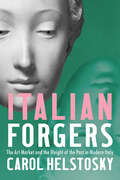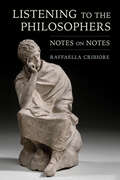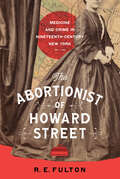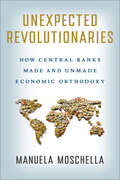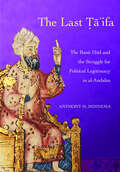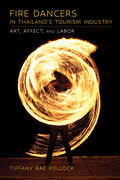- Table View
- List View
In Dust and Ashes: Hanne Wilhelmsen Book Ten (A Hanne Wilhelmsen Novel #10)
by Anne HoltThe final nail-biting installment in the ten-part, award-winning Hanne Wilhelmsen series—bestselling in Norway and throughout Europe—from Scandinavia&’s most celebrated female crime writer, Anne Holt.Police investigator Kjell Bonsaksen is a contented man in most areas of life, but for one mistake he made years ago that has rankled like a stone in his shoe ever since: in 2001, a two-year-old girl was killed by a speeding car while playing in the road in front of her home. The marriage of the toddler&’s grief-stricken parents dissolved in the wake of the accident, and not long thereafter, the girl&’s mother died under mysterious circumstances. The girl&’s father, Jonas, was convicted of his ex-wife&’s murder and sentenced to twelve years in prison. But Kjell Bonsaksen knew he was innocent. Now it&’s 2016, and Kjell is looking forward to his retirement to the French countryside with his wife. An uncomfortable chance encounter with Jonas at a roadside gas station prompts him to dig out Jonas&’s case files for Detective Henrik Holme, the resident cold case prodigy. Henrik doesn&’t take long to convince his beloved mentor, Hanne Wilhelmsen, that Jonas was wrongly convicted for his ex-wife&’s murder. As their investigation evolves, Hanne and Henrik uncover eerie connections to the recent suicide of a right-wing extremist blogger whose fanatic ideologies seem incompatible with a desire to die. Masterfully plotted, In Dust and Ashes is the outstanding finale to Anne Holt&’s award-winning, politically and socially conscious series, confirming Hanne Wilhelmsen as a character who will &“get in your head—and stay there&” (Entertainment Weekly).
The Language of Butterflies: How Thieves, Hoarders, Scientists, and Other Obsessives Unlocked the Secrets of the World's Favorite Insect
by Wendy WilliamsIn this &“deeply personal and lyrical book&” (Publishers Weekly) from the New York Times bestselling author of The Horse, Wendy Williams explores the lives of one of the world&’s most resilient creatures—the butterfly—shedding light on the role that they play in our ecosystem and in our human lives.&“[A] glorious and exuberant celebration of these biological flying machines…Williams takes us on a humorous and beautifully crafted journey&” (The Washington Post). From butterfly gardens to zoo exhibits, these &“flying flowers&” are one of the few insects we&’ve encouraged to infiltrate our lives. Yet, what has drawn us to these creatures in the first place? And what are their lives really like? In this &“entertaining look at &‘the world&’s favorite insect&’&” (Booklist, starred review), New York Times bestselling author and science journalist Wendy Williams reveals the inner lives of these delicate creatures, who are far more intelligent and tougher than we give them credit for. Monarch butterflies migrate thousands of miles each year from Canada to Mexico. Other species have learned how to fool ants into taking care of them. Butterflies&’ scales are inspiring researchers to create new life-saving medical technology. Williams takes readers to butterfly habitats across the globe and introduces us to not only various species, but &“digs deeply into the lives of both butterflies and [the] scientists&” (Science magazine) who have spent decades studying them. Coupled with years of research and knowledge gained from experts in the field, this accessible &“butterfly biography&” explores the ancient partnership between these special creatures and humans, and why they continue to fascinate us today. &“Informative, thought-provoking,&” (BookPage, starred review) and extremely profound, The Language of Butterflies is a &“fascinating book [that] will be of interest to anyone who has ever admired a butterfly, and anyone who cares about preserving these stunning creatures&” (Library Journal).
A Walk in the Park: The True Story of a Spectacular Misadventure in the Grand Canyon
by Kevin FedarkoTwo friends, zero preparation, one dream. From the author of the beloved bestseller The Emerald Mile, a rollicking and poignant account of the epic misadventure of a 750-mile odyssey, on foot, through the heart of America&’s most magnificent national park and the grandest wilderness on earth.A few years after quitting his job to follow an ill-advised dream of becoming a guide on the Colorado River, Kevin Fedarko was approached by his best friend, the National Geographic photographer Pete McBride, with a vision as bold as it was harebrained. Together, they would embark on an end-to-end traverse of the Grand Canyon, a journey that, McBride promised, would be &“a walk in the park.&” Against his better judgment, Fedarko agreed to the scheme, unaware that the small cluster of experts who had completed the crossing billed it as &“the toughest hike in the world.&” The ensuing ordeal, which lasted more than a year, revealed a place that was deeper, richer, and far more complex than anything the two men had imagined—and came within a hair&’s breadth of killing them both. They struggled to make their way through the all but impenetrable reaches of its truest wilderness, a vertical labyrinth of thousand-foot cliffs and crumbling ledges where water is measured out by the teaspoon and every step is fraught with peril—and where, even today, there is still no trail along the length of the country&’s best-known and most iconic park. Along the way, veteran long-distance hikers ushered them into secret pockets, invisible to the millions of tourists gathered on the rim, where only a handful of humans have ever laid eyes. Members of the canyon&’s eleven Native American tribes brought them face-to-face with layers of history that forced them to reconsider myths at the center of our national parks—and exposed them to the impinging threats of commercial tourism. Even Fedarko&’s dying father, who had first pointed him toward the canyon more than forty years earlier but had never set foot there himself, opened him to a new way of seeing the landscape. And always, there was the great gorge itself: austere and unforgiving but suffused with magic, drenched in wonder, and redeemed by its own transcendent beauty. A Walk in the Park is a singular portrait of a sublime place, and a deeply moving plea for the preservation of America&’s greatest natural treasure.
Custer Died For Your Sins: An Indian Manifesto
by Vine DeloriaStanding Rock Sioux activist, professor, and attorney Vine Deloria, Jr., shares his thoughts about U.S. race relations, federal bureaucracies, Christian churches, and social scientists in a collection of eleven eye-opening essays infused with humor.This &“manifesto&” provides valuable insights on American Indian history, Native American culture, and context for minority protest movements mobilizing across the country throughout the 1960s and early 1970s. Originally published in 1969, this book remains a timeless classic and is one of the most significant nonfiction works written by a Native American.
Gwendy's Button Box: A Novella (Gwendy's Button Box Trilogy #1)
by Stephen King Richard ChizmarSet in the fictional town of Castle Rock, Maine Stephen King teams up with long-time friend and award-winning author Richard Chizmar for the first time in this original, chilling novella that revisits the mysterious town of Castle Rock.There are three ways up to Castle View from the town of Castle Rock: Route 117, Pleasant Road, and the Suicide Stairs. Every day in the summer of 1974, twelve-year-old Gwendy Peterson has taken the stairs, which are held by strong—if time-rusted—iron bolts and zig-zag up the precarious cliffside. Then one day when Gwendy gets to the top of Castle View, after catching her breath and hearing the shouts of kids on the playground below, a stranger calls to her. There on a bench in the shade sits a man in black jeans, a black coat, and a white shirt unbuttoned at the top. On his head is a small, neat black hat. The time will come when Gwendy has nightmares about that hat… The little town of Castle Rock, Maine has witnessed some strange events and unusual visitors over the years, but there is one story that has never been told—until now.
The Turn of the Key
by Ruth WareINSTANT NEW YORK TIMES BESTSELLER &“A superb suspense writer…Brava, Ruth Ware. I daresay even Henry James would be impressed.&” —Maureen Corrigan, author of So We Read On &“This appropriately twisty Turn of the Screw update finds the Woman in Cabin 10 author in her most menacing mode, unfurling a shocking saga of murder and deception.&” —Entertainment Weekly From the #1 New York Times bestselling author of The Lying Game and The Death of Mrs. Westaway comes this thrilling novel that explores the dark side of technology. When she stumbles across the ad, she&’s looking for something else completely. But it seems like too good an opportunity to miss—a live-in nannying post, with a staggeringly generous salary. And when Rowan Caine arrives at Heatherbrae House, she is smitten—by the luxurious &“smart&” home fitted out with all modern conveniences, by the beautiful Scottish Highlands, and by this picture-perfect family. What she doesn&’t know is that she&’s stepping into a nightmare—one that will end with a child dead and herself in prison awaiting trial for murder. Writing to her lawyer from prison, she struggles to explain the events that led to her incarceration. It wasn&’t just the constant surveillance from the home&’s cameras, or the malfunctioning technology that woke the household with booming music, or turned the lights off at the worst possible time. It wasn&’t just the girls, who turned out to be a far cry from the immaculately behaved model children she met at her interview. It wasn&’t even the way she was left alone for weeks at a time, with no adults around apart from the enigmatic handyman. It was everything. She knows she&’s made mistakes. She admits that she lied to obtain the post, and that her behavior toward the children wasn&’t always ideal. She&’s not innocent, by any means. But, she maintains, she&’s not guilty—at least not of murder—but somebody is. Full of spellbinding menace and told in Ruth Ware&’s signature suspenseful style, The Turn of the Key is an unputdownable thriller from the Agatha Christie of our time.
One by One: The Woman In Cabin 10, The Turn Of The Key, One By One
by Ruth WareThis instant New York Times bestseller and &“claustrophobic spine-tingler&” (People) from Ruth Ware follows a group of employees trapped on a snow-covered mountain.Getting snowed in at a luxurious, rustic ski chalet high in the French Alps doesn&’t sound like the worst problem in the world. Especially when there&’s a breathtaking vista, a full-service chef and housekeeper, a cozy fire to keep you warm, and others to keep you company. Unless that company happens to be eight coworkers…each with something to gain, something to lose, and something to hide. When the cofounder of Snoop, a trendy London-based tech start-up, organizes a weeklong trip for the team in the French Alps, it starts out as a corporate retreat like any other: presentations and strategy sessions broken up by mandatory bonding on the slopes. But as soon as one shareholder upends the agenda by pushing a lucrative but contentious buyout offer, tensions simmer and loyalties are tested. The storm brewing inside the chalet is no match for the one outside, however, and a devastating avalanche leaves the group cut off from all access to the outside world. Even worse, one Snooper hadn&’t made it back from the slopes when the avalanche hit. As each hour passes without any sign of rescue, panic mounts, the chalet grows colder, and the group dwindles further…one by one.
Strange Sally Diamond
by Liz Nugent&“Shocking, disturbing, and utterly original.&” —Paula Hawkins, #1 New York Times bestselling author This &“haunting and poignant tale, one that won&’t be easy to forget any time soon&” (Mystery and Suspense Magazine), follows an enigmatic woman confronting her unknown past—from internationally bestselling author Liz Nugent.Reclusive Sally Diamond is thrust into the media spotlight when she tries to incinerate her dead father, causing widespread outrage. Now she&’s the center of attention, not only from hungry reporters and police detectives, but also a sinister voice from a past she does not remember. As she begins to discover the repressed memories of her horrific early childhood, Sally steps into the world for the first time, making new friends, big decisions, and learning that people don&’t always mean what they say. But who is the man observing Sally from the other side of the world, and why does he call her Mary? And why does her new neighbor seem to be obsessed with her? Sally&’s trust issues are about to be severely challenged in this &“truly incredible reading experience&” (Lisa Jewell, #1 New York Times bestselling author).
Lethal Agent (A Mitch Rapp Novel #18)
by Vince Flynn Kyle MillsAn unprecedented and terrifying bioterrorism plot threatens to kill millions in the midst of a divisive presidential election in this &“gut punch of a tale that exploits our greatest fears&” (The Providence Journal) from the #1 New York Times bestselling Mitch Rapp series. A toxic presidential election is underway in an America already badly weakened by internal divisions. While politicians focus entirely on maintaining their own power, ISIS kidnaps a brilliant French microbiologist and forces him to begin manufacturing anthrax. Slickly produced videos chronicling his progress and threatening an imminent attack are posted to the internet, intensifying the hysteria gripping the United States. ISIS recruits a Mexican drug cartel to smuggle the bioweapon across the border, but it&’s really just a diversion. The terrorist organization needs to keep Mitch Rapp and Irene Kennedy distracted long enough to weaponize a deadly virus that they stumbled upon in Yemen. If they succeed, they&’ll trigger a pandemic that could rewrite the world order. Rapp embarks on a mission to infiltrate the Mexican cartels and track down the ISIS leader who he failed to kill during their last confrontation. But with Washington&’s political elite increasingly lined up against him, he knows he&’ll be on his own. Another stellar and white-knuckled thriller, Lethal Agent proves that &“Mitch Rapp is the hero we need, maybe now more than ever&” (The Real Book Spy).
The Turn of the Key
by Ruth WareFrom the #1 New York Times bestselling author of In a Dark, Dark Wood, The Woman in Cabin 10, The Lying Game, and The Death of Mrs. Westaway comes Ruth Ware&’s highly anticipated fifth novel.When Rowan stumbles across an ad for a live-in nanny, she&’s looking for something else completely. But it seems like too good an opportunity to miss—with a staggeringly generous salary. And when she arrives at Heatherbrae House, she is smitten—by the luxurious &“smart&” house fitted out with all modern conveniences, by the beautiful Scottish Highlands, and by this picture-perfect family. What Rowan doesn&’t know is that she&’s stepping into a nightmare—one that will end with a child dead and Rowan in prison awaiting trial for murder. Writing to her lawyer from prison, Rowan struggles to explain the unravelling events that have led to her incarceration. It wasn&’t just the constant surveillance from the cameras installed around the house, or the malfunctioning technology that woke the household with booming music, or turned the lights off at the worst possible time. It wasn&’t just the children, who turned out to be a far cry from the immaculately behaved model children she met at her interview. It wasn&’t even the way she was left alone for weeks at a time, with no adults around apart from the enigmatic handyman, Jack Grant. It was everything. Rowan knows she&’s made mistakes. She admits that she lied to obtain the post, and that her behavior toward the children wasn&’t always ideal. She&’s not innocent, by any means. But, she maintains, she&’s not guilty—at least not of murder. Which means someone else is. Full of spellbinding menace and told in Ruth Ware&’s signature suspenseful style, this is an unputdownable thriller from the Agatha Christie of our time.
Howard Stern Comes Again
by Howard SternOver his unrivaled four-decade career in radio, Howard Stern has interviewed thousands of personalities—discussing sex, relationships, money, fame, spirituality, and success with the boldest of bold-faced names. But which interviews are his favorites? It&’s one of the questions he gets asked most frequently. Howard Stern Comes Again delivers his answer.Rock stars and rap gods. Comedy legends and A-list actors. Supermodels and centerfolds. Moguls and mobsters. A president. This book is a feast of conversation and more, as between the lines Stern offers his definitive autobiography—a magnum opus of confession and personal exploration. Tracy Morgan opens up about his near-fatal car crash. Lady Gaga divulges her history with cocaine. Madonna reminisces on her relationship with Tupac Shakur. Bill Murray waxes philosophical on the purpose of life. Jerry Seinfeld offers a master class on comedy. Harvey Weinstein denies the existence of the so-called casting couch. An impressive array of creative visionaries weigh in on what Stern calls &“the climb&”—the stories of how they struggled and eventually prevailed. As he writes in the introduction, &“If you&’re having trouble finding motivation in life and you&’re looking for that extra kick in the ass, you will find it in these pages.&” Interspersed throughout are rare selections from the Howard Stern Show archives with Donald Trump that depict his own climb: transforming from Manhattan tabloid fixture to reality TV star to president of the United States. Stern also tells of his Moby Dick-like quest to land an interview with Hillary Clinton in the run-up to the 2016 election—one of many newly written revelations from the author. He speaks with extraordinary candor about a variety of subjects, including his overwhelming insecurity early in his career, his revolutionary move from terrestrial radio to SiriusXM, and his belief in the power of psychotherapy. As Stern insightfully notes in the introduction: &“The interviews collected here represent my best work and show my personal evolution. But they don&’t just show my evolution. Gathered together like this, they show the evolution of popular culture over the past quarter century.&”
The Jackal (Black Dagger Brotherhood: Prison Camp #1)
by J.R. WardThe #1 New York Times bestselling author of The Sinner brings another hot adventure of true love and ultimate sacrifice in the Black Dagger Brotherhood world.The location of the glymera&’s notorious prison camp was lost after the raids. When a freak accident provides Nyx clues to where her sister may still be doing time, she becomes determined to find the secret subterranean labyrinth. Embarking on a journey under the earth, she learns a terrible truth—and meets a male who changes everything, forever. The Jackal has been in the camp for so long he cannot recall anything of the freedom he once knew. Trapped by circumstances out of his control, he helps Nyx because he cannot help himself. After she discovers what happened to her sister, getting her back out becomes a deadly mission for them both. United by a passion they can&’t deny, they work together on an escape plan for Nyx—even though their destiny is to be forever apart. And as the Black Dagger Brotherhood is called upon for help, and Rhage discovers he has a half-brother who&’s falsely imprisoned, a devious warden plots the deaths of them all…even the Brothers.
Prisoner of Night (The Black Dagger Brotherhood World #17)
by J.R. WardFrom #1 New York Times bestselling author J.R. Ward comes an unforgettable story of passion and vengeance in the Black Dagger Brotherhood world.When Ahmare&’s brother is abducted, there is nothing she won&’t do to get him back safely. She is unprepared, however, for the lengths she will have to go to save his life. Paired with a dangerous but enticing prisoner, she embarks on an odyssey into another world. Duran, betrayed by his father, imprisoned in a dungeon for decades, has survived only because of his thirst for vengeance. He has been biding his time to escape and is shocked to find an unlikely and temporary freedom in the form of a determined young female. Battling against deadly forces and facing unforeseen peril, the pair are in a race to save Ahmare&’s brother. As time runs out, and the unthinkable looms, even true love may not be enough to carry them through.
Where Winter Finds You: A Caldwell Christmas (The Black Dagger Brotherhood World #19)
by J.R. Ward#1 New York Times bestselling author J.R. Ward is heating things up this winter with a holiday novel featuring some of her most iconic Black Dagger Brothers.When Trez lost his beloved to a tragic death (The Shadows, Black Dagger Brotherhood #13), his soul was crushed and his destiny seemed relegated to suffering. But when he meets a mysterious female, he becomes convinced his true love has been reincarnated. Is he right? Or has his grief created a disastrous delusion? Therese has come to Caldwell to escape a rift with her bloodline. The revelation that she was adopted and not born into her family shakes the foundations of her identity, and she is determined to make it on her own. Her attraction to Trez is not what she&’s looking for, except the sexy Shadow proves to be undeniable. Has fate provided a grieving widower with a second chance...or is Trez too blinded by the past to see the present for what it really is? In this sensual, arresting book full of the themes of redemption and self-discovery, two lost souls find themselves at a crossroads where the heart is the only compass that can be trusted...but that may require a courage that neither of them possesses.
The Hunt for History: On the Trail of the World's Lost Treasures—from the Letters of Lincoln, Churchill, and Einstein to the Secret Recordings Onboard JFK's Air Force One
by Nathan Raab Luke BarrNathan Raab, America&’s preeminent rare documents dealer, delivers a &“diverting account of treasure hunting in the fast lane&” (The Wall Street Journal) that recounts his years as the Sherlock Holmes of historical artifacts, questing after precious finds and determining their authenticity.A box uncovered in a Maine attic with twenty letters written by Alexander Hamilton; a handheld address to Congress by President George Washington; a long-lost Gold Medal that belonged to an American President; a note that Winston Churchill wrote to his captor when he was a young POW in South Africa; paperwork signed and filled out by Amelia Earhart when she became the first woman to fly the Atlantic; an American flag carried to the moon and back by Neil Armstrong; an unpublished letter written by Albert Einstein, discussing his theory of relativity. Each day, people from all over the world contact Nathan Raab for help understanding what they have, what it might be worth, and how to sell it. The Raab Collection&’s president, Nathan is a modern-day treasure hunter and one of the world&’s most prominent dealers of historical artifacts. Most weeks, he travels the country, scours auctions, or fields phone calls and emails from people who think they may have found something of note in a grandparent&’s attic. In The Hunt for History, &“Raab takes us on a wild hunt and deliciously opens up numerous hidden crevices of history&” (Jay Winik, author of April 1865)—spotting a letter from British officials that secured the Rosetta Stone; discovering a piece of the first electric cable laid by Edison; restoring a fragmented letter from Andrew Jackson that led to the infamous Trail of Tears; and locating copies of missing audio that had been recorded on Air Force One as the plane brought JFK&’s body back to Washington. Whether it&’s the first report of Napoleon&’s death or an unpublished letter penned by Albert Einstein to a curious soldier, every document and artifact Raab uncovers comes with a spellbinding story—and often offers new insights into a life we thought we knew.
The Debt Trap: How Student Loans Became a National Catastrophe
by Josh MitchellAN NPR AND NEW YORK POST BEST BOOK OF 2021 From acclaimed Wall Street Journal reporter Josh Mitchell, the &“devastating account&” (The Wall Street Journal) of student debt in America.In 1981, a new executive at Sallie Mae took home the company&’s financial documents to review. &“You&’ve got to be shitting me,&” he later told the company&’s CEO. &“This place is a gold mine.&” Over the next four decades, the student loan industry that Sallie Mae and Congress created blew up into a crisis that would submerge a generation of Americans into $1.5 trillion in student debt. In The Debt Trap, Wall Street Journal reporter Josh Mitchell tells the &“vivid and compelling&” (Chicago Tribune) untold story of the scandals, scams, predatory actors, and government malpractice that have created the behemoth that one of its original architects called a &“monster.&” As he charts the &“jaw-dropping&” (Jeffrey Selingo, New York Times bestselling author of Who Gets in and Why) seventy-year history of student debt in America, Mitchell never loses sight of the countless student victims ensnared by an exploitative system that depends on their debt. Mitchell also draws alarming parallels to the housing crisis in the late 2000s, showing the catastrophic consequences student debt has had on families and the nation&’s future. Mitchell&’s character-driven narrative is &“necessary reading&” (The New York Times) for anyone wanting to understand the central economic issue of our day.
Funk the Clock: Transgressing Time While Young, Perceptive, and Black
by Rahsaan MahadeoFunk the Clock is about those said to be emblematic of the future yet denied a place in time. Hence, this book is both an invitation and provocation for Black youth to give the finger to the hands of time, while inviting readers to follow their lead.In revealing how time is racialized, how race is temporalized, and how racism takes time, Rahsaan Mahadeo makes clear why conventional sociological theories of time are both empirically and theoretically unsustainable and more importantly, why they need to be funked up/with. Through his study of a youth center in Minneapolis, Mahadeo provides examples of Black youth constructing alternative temporalities that center their lived experiences and ensure their worldviews, tastes, and culture are most relevant and up to date. In their stories exists the potential to stretch the sociological imagination to make the familiar (i.e., time) strange. Funk the Clock forges new directions in the study of race and time by upending what we think we know about time, while centering Black youth as key collaborators in rewriting knowledge as we know it.
Schoolishness: Alienated Education and the Quest for Authentic, Joyful Learning
by Susan D. BlumIn Schoolishness, Susan D. Blum continues her journey as an anthropologist and educator. The author defines "schoolishness" as educational practices that emphasize packaged "learning," unimaginative teaching, uniformity, constant evaluation by others, arbitrary forms, predetermined time, and artificial boundaries, resulting in personal and educational alienation, dependence, and dread.Drawing on critical, progressive, and feminist pedagogy in conversation with the anthropology of learning, and building on the insights of her two previous books Blum proposes less-schoolish ways of learning in ten dimensions, to lessen the mismatch between learning in school and learning in the wild. She asks, if learning is our human "superpower," why is it so difficult to accomplish in school? In every chapter Blum compares the fake learning of schoolishness with successful examples of authentic learning, including in her own courses, which she scrutinizes critically.Schoolishness is not a pedagogical how-to book, but a theory-based phenomenology of institutional education. It has moral, psychological, and educational arguments against schoolishness that, as Blum notes, "rhymes with foolishness."
I Try Not to Think of Afghanistan: Lithuanian Veterans of the Soviet War (NIU Series in Slavic, East European, and Eurasian Studies)
by Anna ReichI Try Not to Think of Afghanistan includes photographs and commentaries from Lithuanian veterans of the Soviet War in Afghanistan (1979–89), addressing the lasting realities of war and its effects on those conscripted to fight. Unflinching first-person accounts give details of training, combat, and the often difficult return to society for military conscripts within the Soviet system. Anna Reich gives insight into the experiences of not only the Lithuanian veterans from the Soviet War in Afghanistan but also veterans from all countries who face similar struggles and challenges.For three months, Reich interacted with twenty-two veterans in their homes and meeting halls and throughout their daily routines to produce portraits that provide intimate and unvarnished portrayals of their lives and the lasting effects of forced military service in the Soviet army. Often ostracized socially because of their involvement with the Soviet army, the veterans frequently feel invisible: there are no social programs to assist them in their attempts to address post-traumatic stress disorder and assimilate into society, their cause is largely unknown, and the government responsible for their conscriptions no longer exists.I Try Not to Think of Afghanistan is the culmination of eight years of investigation into the psychological toll of war and trauma. In providing a rarely seen perspective of life after combat, the book intersects with contemporary discourse, specifically the way the US experience in Afghanistan closely mirrors that of the Soviets and the Russian Federation's forced conscription of young men to fight in Ukraine.
Italian Forgers: The Art Market and the Weight of the Past in Modern Italy
by Carol HelstoskyItalian Forgers takes an unorthodox approach to the fascinating topic of art forgery, focusing not on art forgery per se, but on the major forgery scandals that shifted the Italian art market in response to constant, and often intense, demand for Italian objects. By focusing on power dynamics that both precipitated forgery scandals and forged Italian cultural identities, this book connects the debates and discussions about three well-known Italian forgers—Giovanni Bastianini, Icilio Joni, and Alceo Dossena—to anchor and investigate the mechanics of the Italian art market from unification through the fascist era.Carol Helstosky examines foreign accounts of transactions and Italian writings about the art market. The actions and words of Italian dealers illustrate how the Italian art and antiquities market was an undeniably modern industry, on par with tourism in terms of its contribution to the Italian economy and to understandings of Italian identity. These accounts also reveal how dealers, artists, go-betweens, guides, and restorers worked to not only meet the intense demand for Italian products but also to develop highly sophisticated business practices to maintain financial stability and respond to shifts in demand consciously (but not always conscientiously).Italian Forgers weaves a compelling narrative about the history of Italian identity, forgery, and the value of the past. As a result, Helstosky brings historical perspective to the study of art forgery and art fraud. She reveals how historical circumstances and structural imbalances of cultural power shaped the market for art and antiquities and amplified incidents of art deception and forgery scandals.
Listening to the Philosophers: Notes on Notes
by Raffaella CribioreListening to the Philosophers offers the first comprehensive look into how philosophy was taught in antiquity through a stimulating study of lectures by ancient philosophers that were recorded by their students. Raffaella Cribiore shows how the study of notes—whether Philodemus of Gadara's notes of Zeno's lectures in the first century BCE, or Arrian recording the Discourses of Epictetus in the second century CE, or the students of Didymus the Blind in the fourth century and Olympiodorus in the sixth century—can enable us to understand the methods and practices of what was an orally conducted education. By considering the pedagogical and mnemonic role of notetaking in ancient education, Listening to the Philosophers demonstrates how in antiquity the written and the spoken worlds were intimately intertwined.
The Abortionist of Howard Street: Medicine and Crime in Nineteenth-Century New York
by R.E. FultonJosephine McCarty had many identities. But in Albany, New York, she was known as "Dr. Emma Burleigh," the abortionist of Howard Street.On January 17, 1872, McCarty boarded a streetcar in Utica, New York, shot her ex-lover in the face, and disembarked, unaware that her bullet had passed through her target's head and into the heart of the innocent man sitting beside him. The unlucky passenger died within minutes. Josephine McCarty was arrested for attempted murder and quickly became the most notorious woman in central New York. The Abortionist of Howard Street was, however, far more than a murderer. In Maryland she was "Johnny McCarty," a blockade runner and spy for Confederate forces. New Yorkers whispered of her as a mistress to corrupt Albany politicians. So who was she?The prosecution in her murder trial claimed she was a calculating and heartless operative both in the bedroom and in her public life. Or was she the victim of ill fortune and the systemic weight of misogyny and male violence? The answer, of course, was not as simple as either narrative. In this absorbing and rich history, R.E. Fulton considers the nuances of Josephine McCarty's life from marriage to divorce, from financial abuse to quarrels with intimate partners and more, trying to decipher the truth behind the stories and myths surrounding McCarty and what ultimately led her to that Utica streetcar with a pistol in her dress pocket. In The Abortionist of Howard Street, Fulton revisites a rich history of women's experience in mid-nineteenth century America, revealing McCarty as a multifaceted, fascinating personification of issues as broad as reproductive health, education, domestic abuse, mental illness, and criminal justice.
Unexpected Revolutionaries: How Central Banks Made and Unmade Economic Orthodoxy (Cornell Studies in Money)
by Manuela MoschellaIn Unexpected Revolutionaries, Manuela Moschella investigates the institutional transformation of central banks from the 1970s to the present. Central banks are typically regarded as conservative, politically neutral institutions that uphold conventional macroeconomic wisdom. Yet in the wake of the 2008 global financial crisis and the 2020 COVID-19 crisis, central banks have upended observer expectations by implementing largely unknown and unconventional monetary policies. Far from abiding by well-established policy playbooks, central banks now engage in practices such as providing liquidity support for a wide range of financial institutions and quantitative easing. They have even stretched the remit of monetary policy into issues such as inequality and climate change. Moschella argues that the political nature of central banks lies at the heart of these transformations. While formally independent, central banks need political support to justify their policies and powers, and to obtain it, they carefully manage their reputation among their audienceselected officials, market actors, and citizens. Challenged by reputational threats brought about by twenty-first-century recessionary and deflationary forces, central banks such as the Federal Reserve System and the European Central Bank strategically deviated from orthodox monetary policies to preempt or manage political backlash and to regain public trust. Central banks thus evolved into a new role only in coordination with fiscal authorities and on the back of public contestation. Eye-opening and insightful, Unexpected Revolutionaries is necessary reading for discussions on the future of the neoliberal macroeconomic regime, the democratic oversight of monetary policymaking, and the role that central banks canor cannotplay in our domestic economies.
The Last Ta'ifa: The Banu Hud and the Struggle for Political Legitimacy in al-Andalus (Medieval Societies, Religions, and Cultures)
by Anthony H. MinnemaIn The Last Ta'ifa, Anthony H. Minnema shows how the Banu Hud, an Arab dynasty from Zaragoza, created and recreated their vision of an autonomous city-state (ta'ifa) in ways that reveal changes to legitimating strategies in al-Andalus and across the Mediterranean. In 1110, the Banu Hud lost control of their emirate in the north of Iberia and entered exile, ending their century-long rule. But far from accepting their fate, the dynasty adapted by serving Christian kings, nurturing rebellions, and carving out a new state in Murcia to recover, maintain, and grow their power. By tracing the Banu Hud across chronicles, charters, and coinage, Minnema shows how dynastic leaders borrowed their rivals' claims and symbols and engaged in similar types of military campaigns and complex alliances in an effort to cultivate authority. Drawing on Arabic, Latin, and vernacular sources, The Last Ta'ifa uses the history of the Banu Hud to connect the pursuit of legitimacy in al-Andalus to the politics of other emerging kingdoms and emirates. The actions of Hudid leaders, Minnema shows, echoed across the region as other kings, rebels, and adventurers employed parallel methods to gain power and resist the forces of centralization, highlighting the constructed nature of legitimacy in al-Andalus and the Mediterranean.
Fire Dancers in Thailand's Tourism Industry: Art, Affect, and Labor
by Tiffany Rae PollockFire Dancers in Thailand's Tourism Industry explores the evolution of fire dancing from informal community jam sessions into the iconic, tourist-oriented performances at beach parties and bars, through a close consideration of the role of affect in the lives of fire dancers in the ever-changing scene. Rather than pursuing the common notion that tourism industries are exploitative enterprises that oppress workers, Tiffany Rae Pollock centers the perspectives of fire artists themselves, who view the industry as simultaneously generative and destructive. Dancers reveal how they employ affect to navigate their lives, art, and labor in this context, showcasing how affect is not only a force that acts on people but also is used and shaped by social actors toward their own ends. Fire Dancers in Thailand's Tourism Industry highlights men as affective laborers, investigating how they manage the eroticization of their identities and the intersections of art and labor in tourist economies. Exploring moments of performance and everyday life, Pollock examines how fire artists reimagine their labor, lives, and communities in Thailand's tourism industry.
